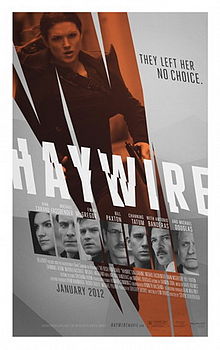 I’m fairly certain I understand what it takes to make great entertainment: a well-written narrative, good casting, and compelling characters, but the current trend of the Anti-Heroine in the Spy Dame genre is really starting to tick me off and sends a bad message about women in the biz.
I’m fairly certain I understand what it takes to make great entertainment: a well-written narrative, good casting, and compelling characters, but the current trend of the Anti-Heroine in the Spy Dame genre is really starting to tick me off and sends a bad message about women in the biz.
It started with Carrie Mathison, the CIA analyst from the popular TV series Homeland. Carrie is a talented analyst aided by her bipolar disorder, when in full-force, enhances her ability to see patterns where others fail. However, her erratic behavior and general prickliness makes her really unlikable as a person.
Then we are followed up by another CIA analyst, Maya Lambert from the Oscar nominated movie Zero Dark Thirty. No apparent mental health issues, but again, the near combative, and constant bullying behavior was overwhelming throughout the movie, and at times, very much unwarranted and out of place.
Now we have the new TV show The Bridge with Sonia Cross, a detective in the El Paso, Texas police department tracking down a serial killer who also has Asperger’s Syndrome, which limits her ability at times to accomplish her job without ruffling more than a few feathers, and apparently also makes her a pretty bad driver.
Maybe these writers think that making these women exceptionally quirky somehow makes them more exciting, lovable, or endearing. Mostly it just makes them aggressively annoying. I love the “procedural drama” because I like to understand how the proverbial machine of investigation and analysis work, but putting the disfunctional character archetype first and foremost really undermines and even derails that genre as a whole.
Now this is not to say that there are not women out there doing the job with these circumstances. But this twist of character doesn’t even have a base level by which to jump off from. A base level where are just women doing The Job. So here’s my bigger problem: It’s not enough that a woman can be a real and normal human being with all the real and normal issues that accompany that, but that she also has to be decidedly single with a mental illness-disorder-awkwardness-whathaveyou, and in many cases, just plain damn unlikable sends the message that dames can’t get the job done unless they delve just enough into a big bag of crazy, or conversely, any woman successful at her job must somehow be a loon on some level. And frankly, at the end of the play, I think it’s a cop-out to cover the fact that writers can’t develop a strong female character without a plot device.
Plenty of amazing fictional Spy Dames didn’t need this malarky: Kate Burroughs, the illustrious M, hell, even Sidney Bristow – Queen of SpyFi – got along just fine with her overly-developed sense of patriotism that almost always resulted in her being a pretty darn positive person…impending Zombie Apocalypse and mad scientists aside.
So I find myself waiting, patiently, for the Happy-Go-Lucky-type SpyDame to appear on the screen, big or small. They’re out there. And if writers had even some sense of a clue, they would write about her.



